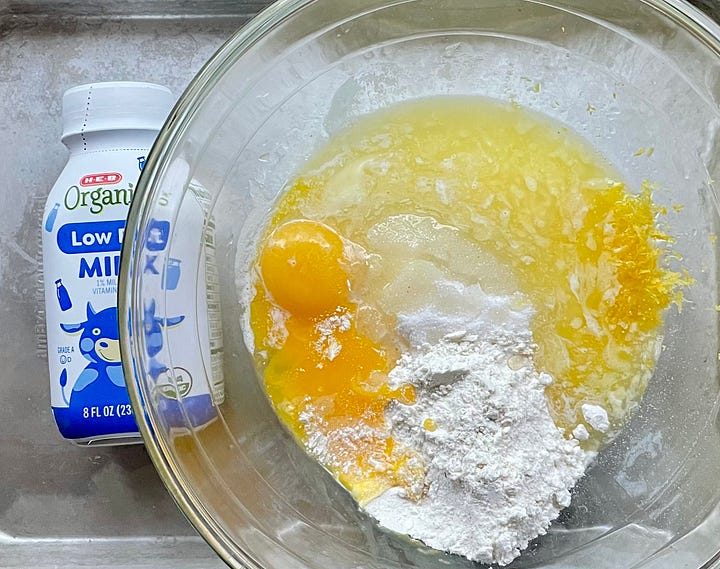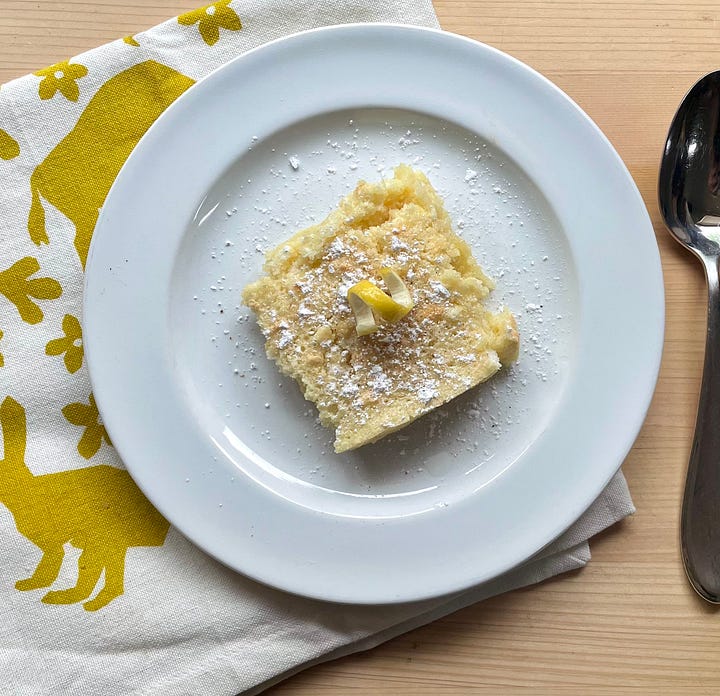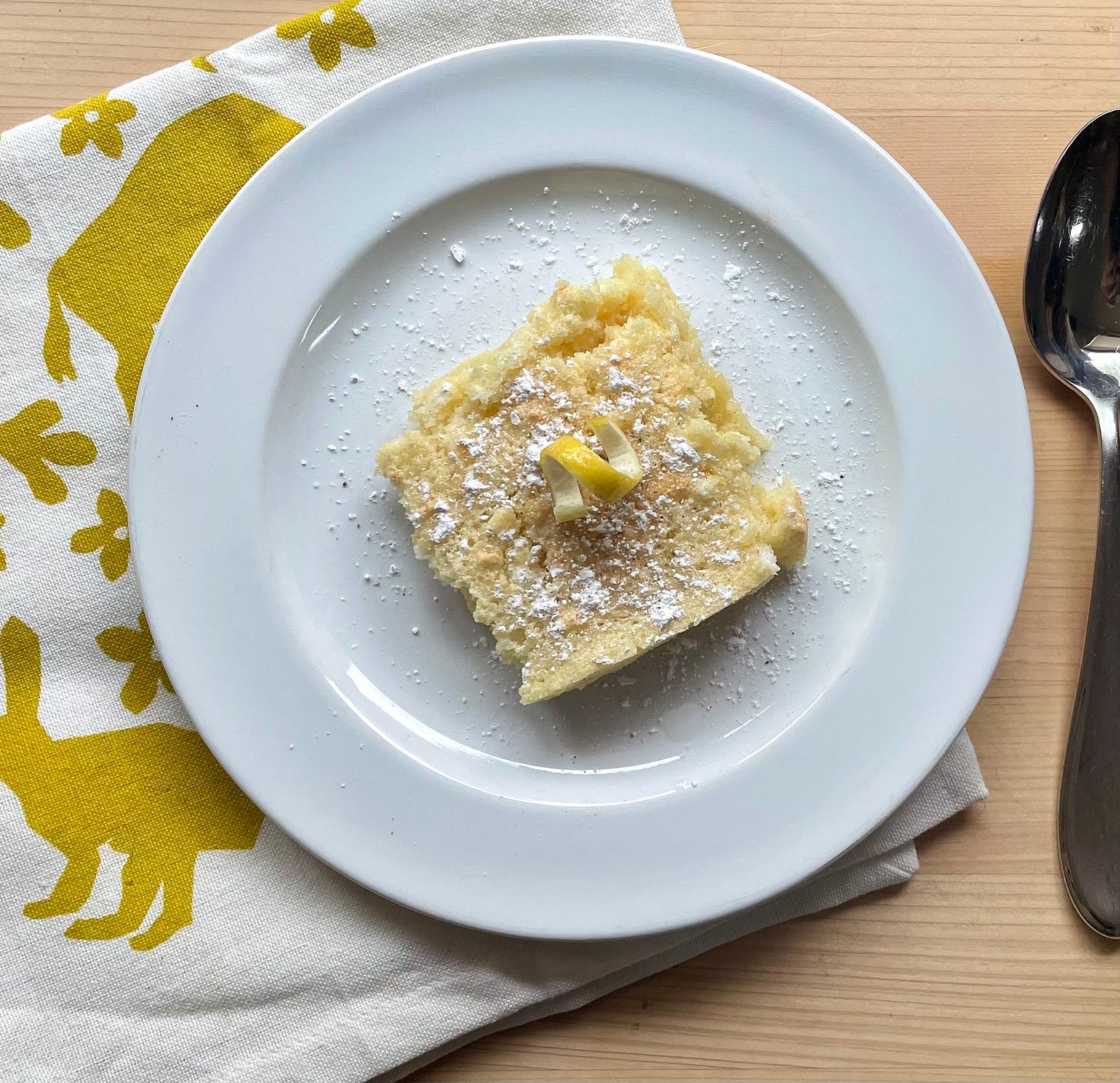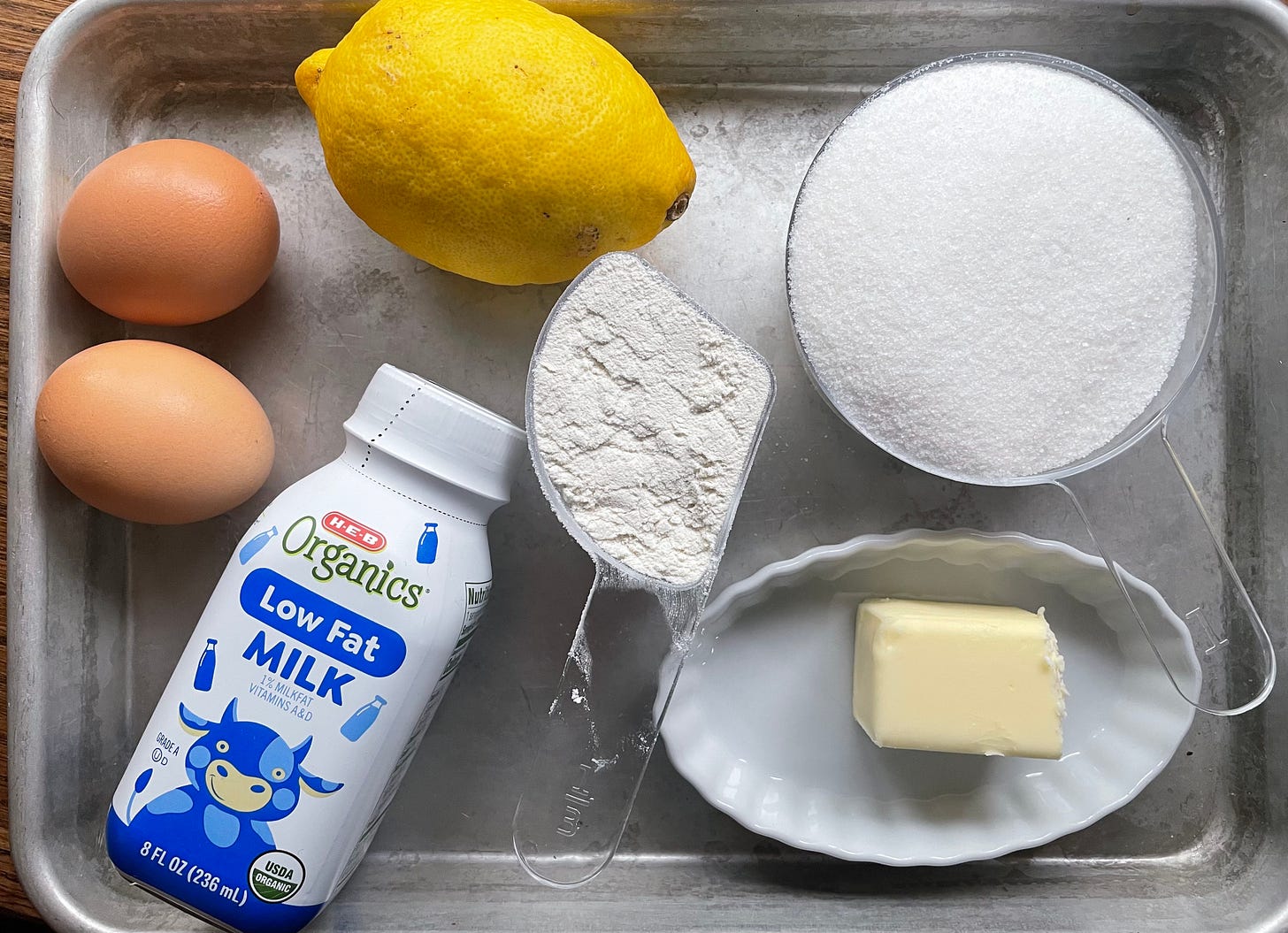Vintage Recipe Roulette: 1941 PTA Lemon Pudding
Increasing division seems like a real problem, unless it's self-saucing dessert
Today’s experiment in vintage baking comes to me through a long and beautiful chain. It’s from the 1940-41 Armstrong Elementary Parent-Teacher Association in Chicago, IL. It first belonged to a friend of my husband’s grandmother, then passed to that grandmother (Ruby), then to my mother-in-law, and then to me, because she knew this is exactly the kind of thing I absolutely swoon over.
I would love this cookbook even if it were pristine, but the fact that it is well-loved makes it even better. If you aren’t sure where to start with a vintage cookbook, look for pages with hand-written notes and lots of food stains.
Friends, I give you the Holy Grail of community cookbooks, a page so loved that it is almost unreadable. While it might be that one recipe on this page was made 100 thousand times, it’s more likely that there are several keepers here. It is priceless.
While believe me, I have my beady eyes on the Grape Nuts Puff Pudding recipe, which which my mother-in-law identifies as being in her mother’s handwriting, that’s going to wait for another day. Today, we’re doing Lemon Pudding, because I already have all the ingredients!
There are 2 recipes for lemon pudding on these pages, and it looks like one of them was deemed preferable, since “Use this method” is written above that one. This recipe looks like one of the self-saucing pudding genre, which I’ve never tried to make.
It sounds really fun, and I’m intrigued by how simple the ingredients are. Only 1/3 c of flour and less than 1/2 c of butter! (I added the pinch of salt my grandmother-in-law recommended, but you can’t see it.)
Prep is somewhat easy as well, although like all community cookbooks, one has to read between the lines a bit. You do have to separate eggs and whip the egg whites. The yolks and the rest of the ingredients are just mixed together, but I mixed everything but the milk first, so that the thick, paste-like batter would help me get rid of any flour lumps, and then I added the milk.




Last, I added my beaten egg whites, but as I was checking the recipe to see whether it said to fold them in or what, I noticed a handwritten note a little above that said not to beat them until dry, which I definitely did, because I had some vague idea that would help the layers separate because they wouldn’t totally blend in. (Ooops. Sorry Ruby, wherever you are!)
In my defense, the note is under 85 years of home cooking.
I’ll stop short next time, but I’m going ahead this time. The egg white does not mix in all the way, as I expected, and I’ll just have to hope that’s okay. I think it would be prettier if they weren’t this dry.
Other between the liners: It doesn’t say how much lemon juice, and the one I have is massive, so I used 2/3 of it to approximate a 20th century USDA standard lemon. It doesn’t say what sized pan, either, so I guessed — I chose an 11x7 because there’s definitely not enough for 9x13, but I was afraid the 8x8 would leave it too deep to cook in the middle, and I prefer my desserts hold the salmonella. It doesn’t say to grease the pan, but I did, hoping it’s not like Angel food cake, where greasing the pan is a grave error. It doesn’t say to what depth the water should be or whether it should be boiling or just hot, so I used just off the boil.
Oh, and a safety tip: If you ever need to add a hot water bath or steam up your oven for bread, it’s best to put the food in the oven first, and then pour hot water directly from a kettle into your chosen basin. This way, you don’t have to try to transfer a big, heavy pan of hot water and risk sloshing it into your dish or onto yourself.
Mine was done in just the 1/2 hour, probably because of the shallow pan arrangement I chose. It does have a few brown spots where that dry egg white remained, but it smells great, and it pulled away from the sides of the pan. I can’t tell whether the bottom is cake or pudding, though, and until I cut into it, I was afraid I had a really bad lemon souffle.


It’s very soft, and the “cake” on top is definitely in the foam cake family, but past even chiffon in terms of softness. It’s like a yellow cloud, but is still more cake-like than pudding like. I wasn’t sure whether the bottom would be sauce or pudding, but it’s a distinct layer and definitely pudding-like. No lumps, and since it uses flour instead of corn starch, it doesn’t have that odd jelly texture that cheap lemon meringue sometimes has. There’s a lovely, light lemon flavor, and although you should not expect it to cut into neat squares and you’ll have to fuss with it to get it off your chosen serving implement, it actually looks rather nice with a dusting and a twist.
This kind of dessert is very unusual these days, so you might find it impresses people despite its humble origins. If you bring it to a potluck, dust it with powdered sugar right before serving — I think if you brought it over that way, the sugar might dissolve and not look as nice.
If you find it not tart enough (as I did), remember that this recipe is from a time before Extreme Air Heads taffy, when flavors of all kinds were more subtle. (Remember when I tried that hilariously menacing recipe for Irish Italian spaghetti with 1/4 tsp of chili powder in it?) It’s a bit too sweet for me, but cutting the sugar might impair the structure. If I make it again, I think I will add the juice and zest of two lemons and hope the extra acid doesn’t cause issues. I might also add a little sprinkle of nutmeg.
Need food first, picky eater-friendly, non-judgmental help with nutrition? You can schedule an appointment with me through Nourish here. I see lots of diabetes, neurodivergence, allergies and GI conditions, autoimmune and inflammatory disorders, and weight management whether for increase or decrease — adults, teens, and kids. We take most insurance, and most often, the copay is $0.
Zen and the Science of Candy Corn is a reader-supported publication that brings me great joy. You can literally give me your 2 cents with the tip jar button below!
Thanks so much for reading! But if you decided to subscribe, free or paid? Awesomesauce!
And feel free to share this post with any bad souffle-loving psychopaths you know.








I read this week's installment with bated breath, knowing it was going to be awesome based on the photograph of the splattered pages in the cookbook. I printed a copy and am so excited to try this recipe. It looks delicious.